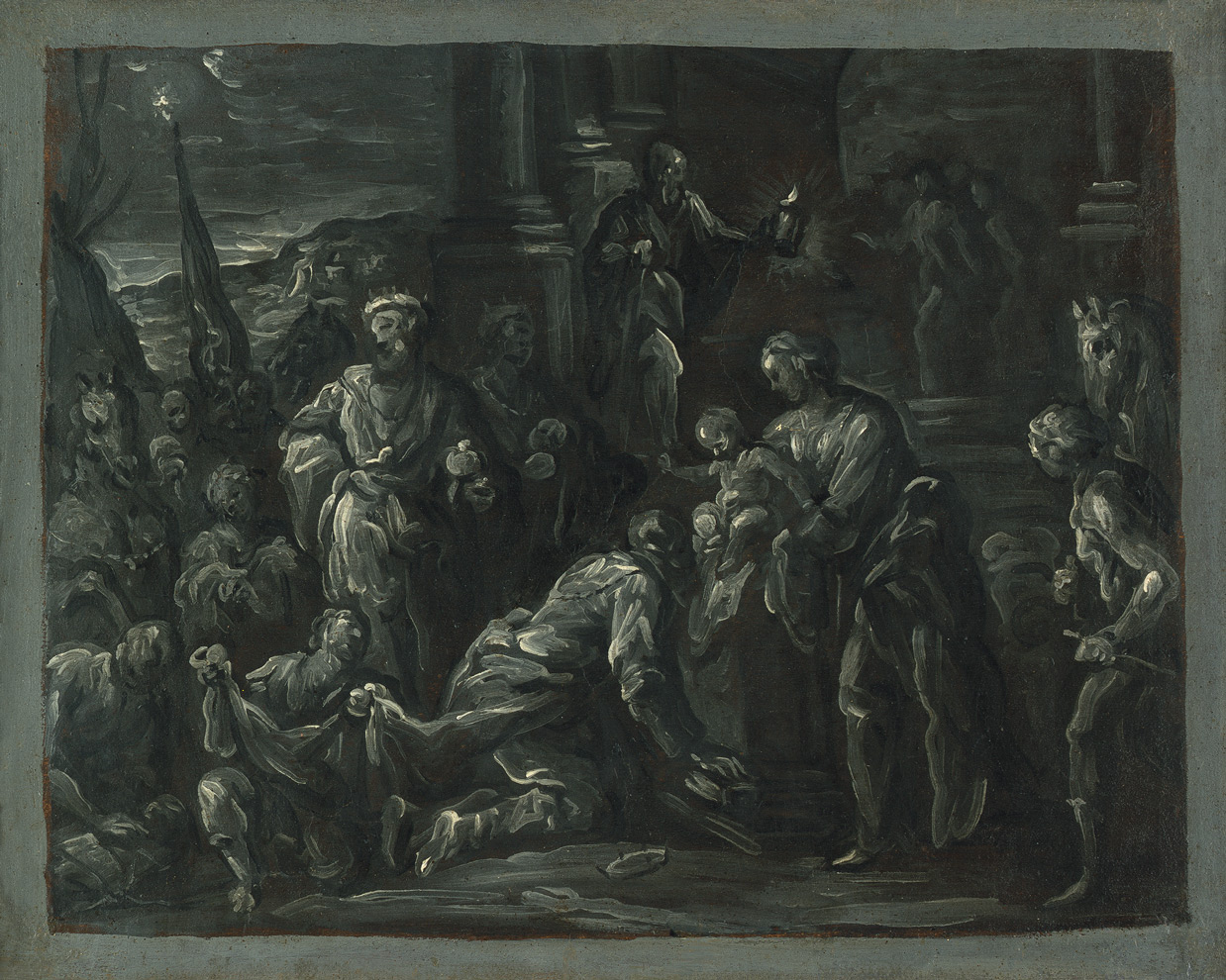Loading the page ...
Andrea Vicentino
(also called Andrea Michieli, circa 1542 Vicenza – 1617 Venice)
The Adoration of the Kings. Grisaille painting on paper, mounted on canvas. 40.8 x 51.3 cm.
The painter Andrea Michieli, also known as Andrea Vicentino, received his initial artistic training from Alessandro Maganza, a master who worked in his home town. About 1575 Vicentino moved to Venice, where his name appeared for the first time in 1583 in the Fraglia, the register of the Venetian painters’ guild. In the Serenissima Vicentino perfected his graphic skills by making drawn copies of the most important works in the Palazzo Ducale, which he collected in an album. Some of these copies have survived in private collections. Vicentino preferred to draw in red chalk, following the example of Federico Zuccaro, who had made systematic use of this medium to draw copies of paintings. In the 1580s Vicentino took part, together with fellow-artists such as Jacopo Palma il Giovane and Vincenzo Corona, in the execution of such major projects as the ceiling paintings for the Sala del Maggior Consiglio in the Palazzo Ducale, where he worked as an assistant to Tintoretto. Vicentino developed a dynamic and accurate drawing style with an assured sense of form and remarkable expressiveness. Despite certain eclectic stylistic features taken from the art of the Venetian Late Renaissance, his work is imbued with individuality and a strong feeling for picturesque effect. His Vicenza origins bestowed upon him a certain artistic independence, enabling him to draw freely upon the wealth of forms offered by Venetian painting of the Cinquecento (see William R. Rearick, Il disegno veneziano del Cinquecento, Milan, 2001, p. 199 ff.).
Occasionally Vicentino would use grisaille to make preparatory sketches of his compositions, as the present oil study shows. The stylistic and compositional borrowings from the work of Paolo Veronese are unmistakable and the virtuoso fa presto of the execution would be unthinkable without Tintoretto’s example. The artist demonstrates great skill and versatility in creating a spatially complex scene populated by numerous figures. The bravura and apparent effortlessness of the picturesque rendering suggest that the bozzetto was painted in a short space of time. In 16th century art theory this facility was known as sprezzatura and considered a true expression of artistic genius. Vicentino has applied the monochrome, finely gradated layers of paint over a dark-brown ground; the subtle play of the various grey and white tones creates a very suggestive overall effect. The scene is depicted under a night sky. At a central spot in the background we can make out the outline of a man who is illuminating the proceedings with a lantern. The dramatic use of flickering light is reminiscent of the mature Titian and the art of Tintoretto. Vicentino’s painting style is accurate and reductive. With a few strokes of the brush he manages to give the numerous protagonists a vivid physical presence and to convincingly structure space and depth.
This oil sketch is reproduced in Julius S. Held, The Oil Sketches of Peter Paul Rubens. A Critical Catalogue, Princeton 1980; vol. I, fig. 4. From the Julius S. Held Collection.
Contact us for further information